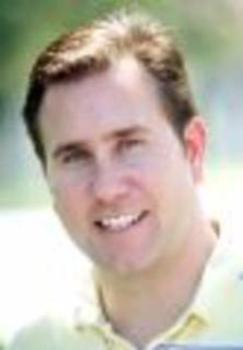This article is a written transcript of the course, “Clinical Acoustic Measures for Identifying and Measuring Voice Disorders”, presented by Christopher Watts, Ph.D. on April 28, 2011.
Communication access realtime translation (cart) is provided in order to facilitate communication accessibility and may not be totally verbatim. The consumer should check with the moderator for any clarifications of the material.
>> Amy Natho: I would like to welcome you to the SpeechPathlogy.com e-learning Expert e-Seminar entitled “Clinical Acoustic Measures for Identifying and Measuring Voice Disorders”. At this time it is my pleasure and an honor to introduce Christopher Watts. Christopher R. Watts, Ph.D., is Professor and Chair of the Department of Communication Sciences and Disorders at Texas Christian University. Dr. Watts has published over 30 manuscripts in the areas of voice production and neurological disorders in peer review journals and has presented over 70 papers at scholarly meetings. Welcome, Chris, and thanks so much to being here to share your expertise today.
[Applause]
>> Dr. Watts. Hello, everybody. Thank you for joining me today.
Purpose
I want to start by getting a hands up if we could - how many of you now in your practice see voice clients? Okay. So only a couple raised their hand there so I would take it that only about that many would also be using acoustic measures. Can we get a hands up as to how many are using acoustic measures during a diagnostic or during the therapy process for voice disordered patients. Okay, just a couple. That gives me some qualifications for my audience. Today's presentation is going to introduce you or reintroduce you to the applications of acoustic measures for working with treatment seeking populations. Whether this might be in a voice clinic or in perhaps the schools, while acoustic measures are not used in isolation to diagnose voice disorders or are the only measures for documenting treatment outcome, they are valuable clinical tools which will help us to confirm voice disorders and to validate or even supplement our auditory impressions of dysphonia. Much of the content in this presentation will be supported by either peer reviewed research or published text which will be identified throughout the presentation with a blue font super scripted number. That number is going to be linked to the same number in the reference section. Feel free to submit questions as I go through this presentation. I will probably address most of those at the end of the presentation but I'll be able to see them as you post them. Maybe if something is relevant I might address it as we go.
Learner Outcomes
There are four major learner outcomes which I hope to facilitate today.
- At the end of this presentation it is my goal that you will be able to identify those acoustic measures which have been shown to have at least a reasonable degree of validity by the research literature for the assessment of dysphonia.
- Secondly, you should be able to describe the many variables which can influence those acoustic measures and there are a number which you need to be concerned with. That knowledge is important because as the clinician and the recording engineer it is you who is going to have to make decisions on control.
- Thirdly, you should be able to compare and contrast the utility of different measures, meaning, you should be able to identify why we would use certain measures to characterize a voice and not others.
- Finally you should be able to identify literature which supports - or in some cases - argues against the use of different acoustic measures in the diagnosis and management of voice disorders.
I've attempted to utilize as many sources in this presentation as possible and I've included all of those in the reference section for you to survey and hopefully utilize.

